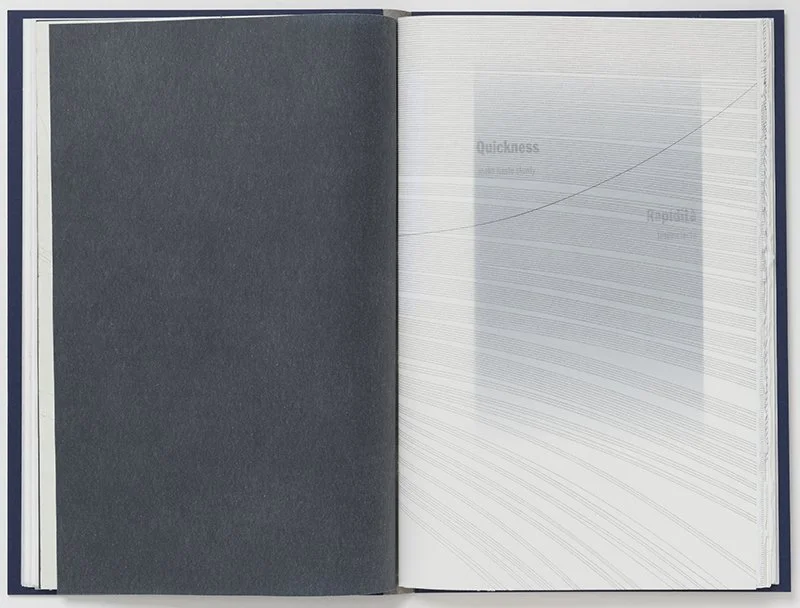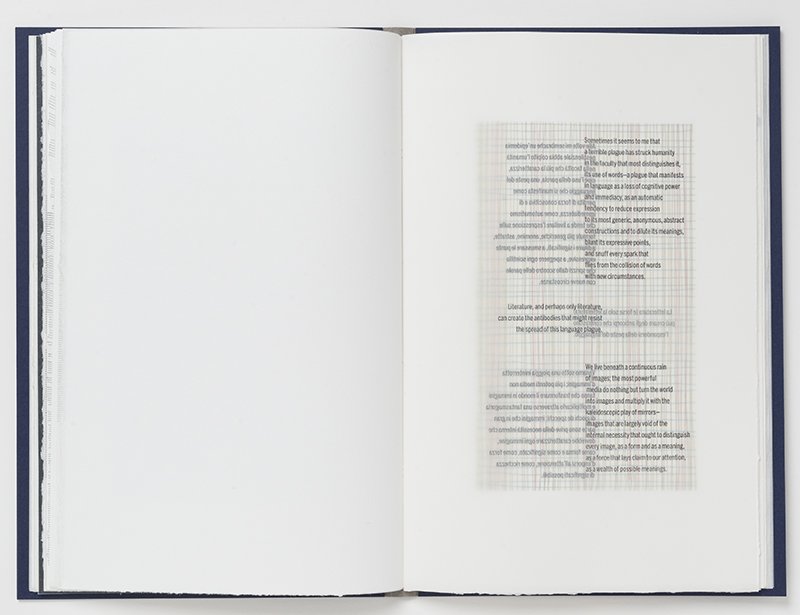Six Memos Project
Twenty copies. One hundred twenty printed pages, English and Italian.
Printed in Haydenville, Massachusetts.
Bound by Jule Claudia Mahn in Leipzig, Germany.









Six Memos Project
In September, 1985, Italo Calvino was preparing to give the Harvard Norton Poetry Lectures during the academic year 1985—1986. The lectures, which he called “memos,” were titled with single word concepts—Lightness, Quickness, Exactitude, Visibility, and Multiplicity—that he felt essential to the continuity of a vibrant literary tradition. He had completed the first five and planned to write the sixth, Consistency, in Cambridge, but died unexpectedly September, 19th, 1985, before he was able to give the lectures or complete the sixth.
Initially drawn to the Memos for the visuality implied by their titles, my reading became more attuned to the fierceness of Calvino’s concern for the future of literature in the 21st century. In Lightness, Calvino writes of “literature as an existential function, the search for lightness as a reaction to the weight of living.” He predicted media’s explosive expansion and its contribution to the destruction of language, the onslaught of meaningless images, and the depletion of the imagination.
The rapidly unfolding chain of events beginning in 2020 that would dramatically alter the world—the Pandemic, American political instability, racial violence, war in Ukraine, war in Gaza—proved Calvino’s message especially prescient. If there is anything we can call a collective imagination it was clearly unable to grasp the weight of the moment as we watched the horrific loss of life, destruction of homes, wasting of land—all casually tossed aside by autocrats employing language stripped of meaning.
While it isn’t possible to escape the world entirely it is necessary to make a stand against distraction and despair. That is what the studio is for, to focus, to find meaning, to make a thing well by making it beautiful. Beauty is not often prized for its seriousness, but I hope this weaving of language, typography, pattern, color, and materials becomes a beautifully serious place for the reader to dwell.
This book strives to achieve a simultaneous reading of text and image through layering and transparency as the basis of its design. Imaging methods include inkjet, and intaglio, chine collé, wire, vinyl, and photopolymer plate printed on the Vandercook.
One hundred twenty printed pages printed in English and Italian. Seven and one eighth by eleven inches. Bound by Jule Claudia Mahn in Leipzig, Germany, with exposed sewing through spine and laminated boards and slipcase.
Twenty copies. $4750.
